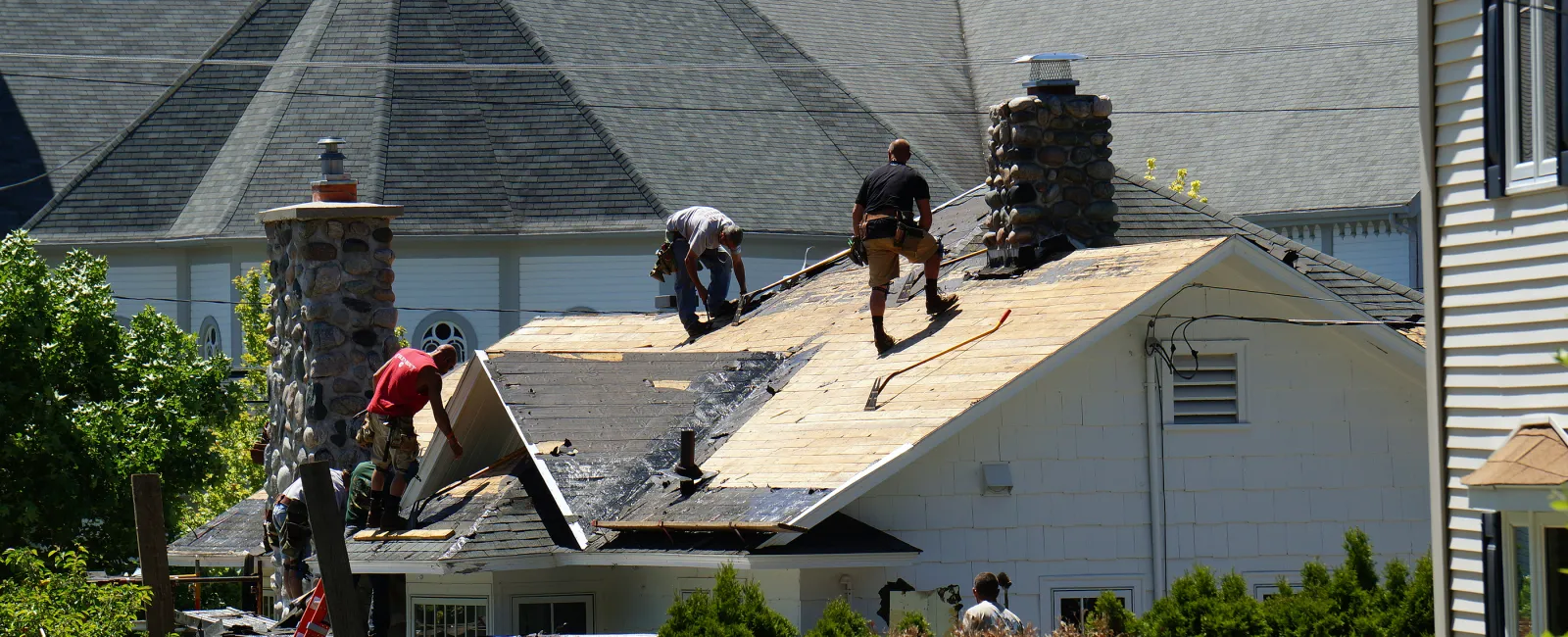Replacing a roof is a major project. It can take one day to three weeks depending on how large your house is, what the weather is like, how complex the job is, and how easy it is to get on the roof.
Roof replacements are, needless to say, a big deal and can be disruptive as a result. In this blog, we’ll answer some common questions about roof replacements and help you determine how to go about getting your own.
Should I Stay Home During a Roof Replacement?
It’s your call if you want to stay at home during a roof replacement, but most likely your contractor is going to suggest that you don’t stick around.
Why? A few reasons. Roof replacements are noisy. Pets are especially affected by this. For their sake, it’s best if you take the day to do something fun away from the house and take them with you. You also don’t exactly have the house to yourself. There will be workers around your house all day, and you’ll have to do your best to stay out of their way. This can be constraining, and make you feel like a visitor in your own home.
But your contractor isn’t going to kick you out of your house. It’s your choice whether you stay home or go elsewhere during a roof replacement. If there is a reason you want to stay home — need to work, want to chat with the contractor, etc. — you can make it work.
How Long Does It Take to Replace a Roof?
There are several things to consider when wondering how long it takes to replace a roof. For an average-sized house (around 3,000 square feet) it should only take one to three days. But, that’s assuming that the weather conditions are perfect and you have an uncomplicated roof. Some of the things that could affect how long it takes to replace your roof are:
-
Weather. Replacing a roof can take longer in cold or wet weather for a couple of reasons. Shingles might not stick to the roof as well as they would in dry weather. In cold weather, especially if it is snowy or icy, contractors must take extra safety measures which could take more time.
-
The size of your house. The bigger the house, the bigger the roof. Also, if you have a complicated roof, that can add extra time to the project.
-
Accessibility. If you live in the middle of a city or a crowded neighborhood, because the buildings are likely closer together, it might not be as easy for your contractor to get all of their equipment and themselves on the roof. This can extend the project.
Should I Go Through the Re-Roofing Process Instead?
Consider whether you need a whole new roof, or just some patching up. If you decide to go with there-roofing process, you will be placing new shingles over an already existing roof. Depending on where you live and whether you’ve had a roof replacement before, this might not be an option, as some areas only allow two covers on a roof.
This will be a decision you will want to make with help from your contractor. If you have a healthy roof, and only one layer of shingles, you will probably want to go the route of re-roofing. However, if you are going to re-roof, it is best to do the whole roof, as opposed to just small sections of it. Re-roofing is also nice because it is less expensive than getting a whole new roof.
Should I Get a New Residential Roof?
Getting anew residential roof might be the way to go for you, especially if you have had your home re-roofed once already, or if there is significant damage to your existing roof. Contractors often begin work on a re-roofing project only to notice that the existing roof has some real trouble areas or is ready to give out entirely. In this case, they’ll likely recommend that you get a whole new roof.
If you’re ready to start your own roof replacement, get in touch with the Findlay Roofing team today!



